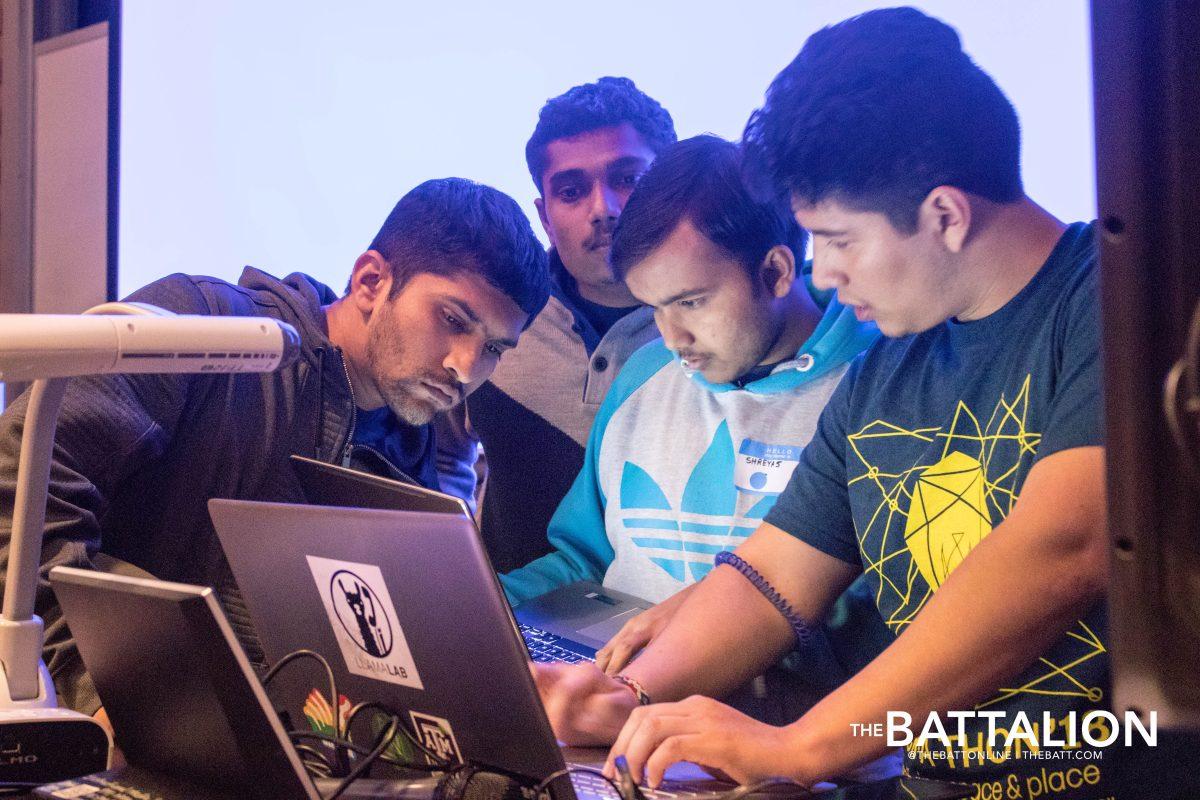The College of Architecture Diversity Council’s annual Hackathon kicked off Friday, Feb. 2 at the Langford Architecture Center. Participants in the 24-hour competition teamed up to tackle diversity and inclusion challenges with a variety of data sources and creation tools at their disposal.
Cecilia Giusti, assistant professor in the Department of Landscape Architecture and Urban Planning, put the event together with the help of student volunteers from her department, including urban and regional planning senior Carlo Chunga.
“I’m a part of this because I care about changing the dynamics of this university,” Chunga said. “I like to see this as an engagement tool with students, faculty and staff from different disciplines. I get to see people come up with different ideas to solve a challenge. It is very interesting.”
The hackathon has a different theme each year, giving participants different challenges related to it.
“Last year [the theme] was ‘Accessibility’ and this year, it is ‘Diversify Space and Place,’” Chunga said. “Students use technology, marketing or whatever else they come up with to solve theme-related challenges.”
Participants attempted to solve one of six challenges posed by various offices and organizations over the 24-hour period.
“We don’t limit participants to using coding or any other technology-oriented solutions,” said Hannah Kastor, urban and regional planning master’s student. “It’s exciting to see the solutions they come up with, especially some simple ones that involve critical thinking”
Each challenge, sponsored by a different university office or organization, is aimed to make campus a more welcoming and inclusive space. This year’s challenge sponsors were the College of Engineering, University Libraries, GLBT Resource Center, Disabilities Services, College of Architecture Diversity Council and the A&M chapter of the League of United Latin American Citizens.
“These organizations had the freedom to come up with a challenge bound by this year’s theme,” Kastor said.
The six challenges were improvements to the Zachry engineering building for students with hearing, visual or physical impairments, wayfinding on campus, finding your place in the Aggie family, Latinx space on campus, creating a more welcoming environment in the libraries and creating an open space for communication.
The best solution to each challenge along with the most interdisciplinary solution were awarded a $500 Amazon gift card with other awards like Most Practical, Most Visionary and People’s Choice earning winners $250.
Each of the 25 teams were formed before the competition began at around 7 p.m. Friday evening. The teams were allowed up to eight members and were given three minutes of presentation time to display their solutions.
“We heard about the event through the ‘Engineers Serving the Community’ group,” said Jaxon Tucker, engineering freshman. “We worked on a device that fits on a pair of spectacles and aids a visually impaired person in navigating the campus through buzzers attached to it.”
Many other logical and practical ideas were implemented by the students participating in the event.
Ruoran Shi, landscape architecture masters student, said she was in a team of six who created a way for students to easily find a study spot at the libraries, for which they won the Most Interdisciplinary award.
“We worked on the ‘AggieSit’ app that shows you seats available in libraries across campus in real time,” Shi said.
The Judge’s Choice award was presented to Megan May, engineering freshman, for her out-of-the-box solution to the issue of increased foot-traffic on campus.
“I came up with the idea of zip-lines going from one building to another,” May said. “It is a good solution because it is inexpensive, low-maintenance and fun.”
Jorge Vanegas, dean of the College of Architecture, took part in the event with an interest in implementing some of the competitor’s projects.
“Our colleges embrace diversity in multiple levels,” Vanegas said. “This event has been a great exemplar of what diversity represents and we want to tap into that richness that our campus possesses.”
Vanegas said the event exceeded his expectations and gave credit to the organizers.
“I have been involved with the event every year and it always addresses an issue of critical importance at a place like A&M,” Vanegas said. “Aggie ingenuity was well represented at the event.”
Vanegas said he will share some ideas with University President Michael K. Young to see if any could be practically implemented.
“This is in line with one of the strategic imperatives of President Young — transformational learning — students transforming lives through what they have learned,” Vanegas said. “I have committed to personally bring these ingenious ideas in front of President Young.”
Creations for a more inclusive Texas A&M
February 4, 2018
Photo by Photo by Madeline Ramos
Team LatinX Cultural Center prepares to present their solution to the challenge presented at Hackathon.
0
Donate to The Battalion
$2165
$5000
Contributed
Our Goal
Your donation will support the student journalists of Texas A&M University - College Station. Your contribution will allow us to purchase equipment and cover our annual website hosting costs, in addition to paying freelance staffers for their work, travel costs for coverage and more!
More to Discover










